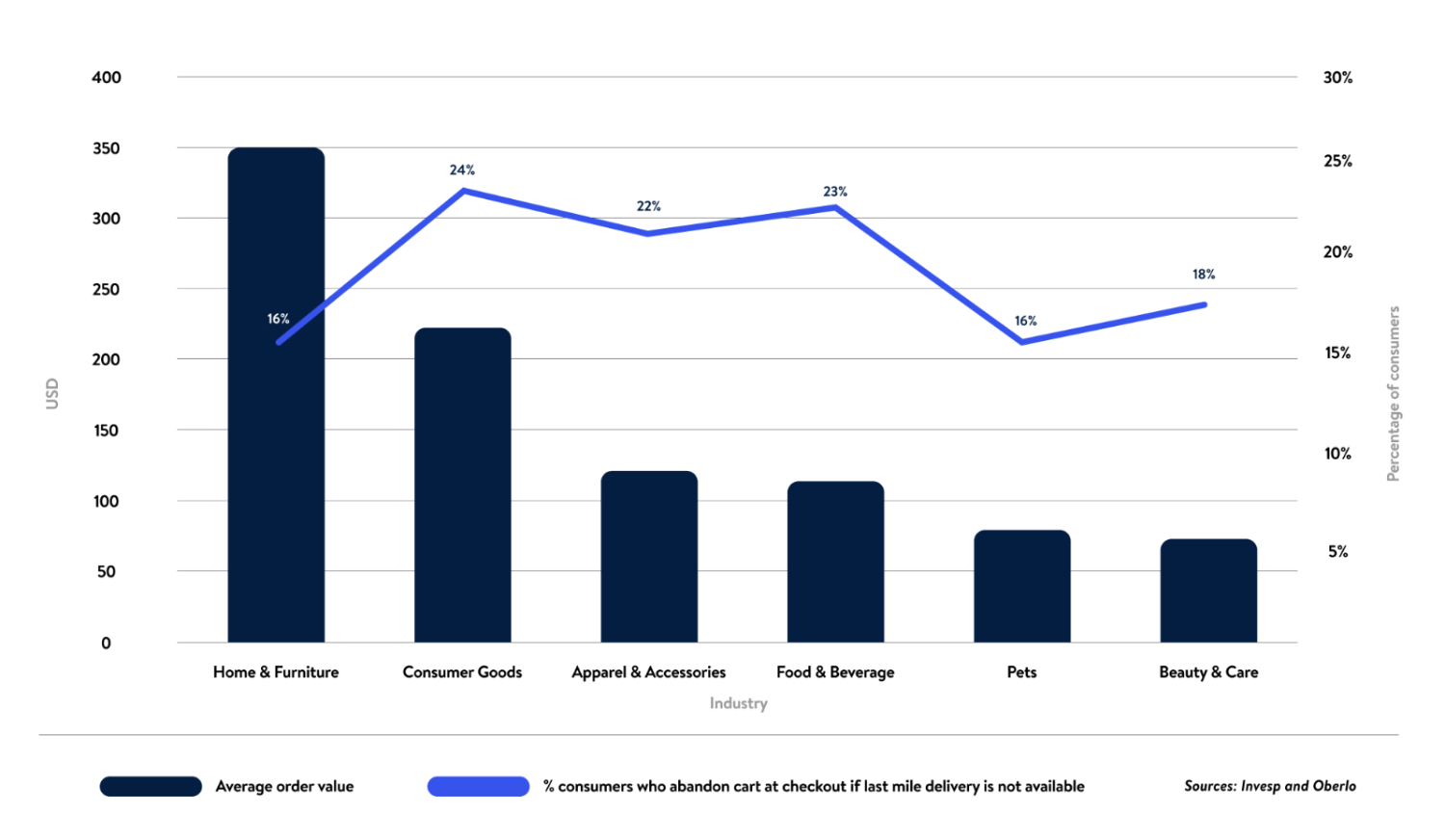
INSIGHTS
How to Adapt Last-Mile Delivery to Wow Customers and Balance Costs
August 26, 2024 | 3 Min. Read | Insights
In a world where customer expectations are constantly evolving, last-mile delivery (LMD) stands as a key differentiator across various industries. At Walmart GoLocal, we have had the privilege of working with a diverse range of clients, learning that a winning last-mile delivery strategy comes from understanding your customers and the unique dynamics of their industry.
In this article we will discuss the importance of tailoring last-mile delivery solutions to individual business needs rather than adopting a one-size-fits-all approach. We will explore key areas that retailers must consider like delivery pricing, delivery service level agreements (SLAs), and delivery coverage, to help balance customer expectations and cost efficiencies.
Delivery Pricing
Customers expect retailers to provide last-mile delivery services while also minimizing delivery fees. A study by McKinsey suggests that customers are quite aware of faster delivery resulting in a higher delivery cost. However, customers are more likely to pay for same-day delivery if the cost is proportional to the item's value or the size of their total purchase. Consumers tend to be less inclined to pay extra for shipping if it significantly increases their total spend with the merchant. It is crucial for retailers to understand their customers’ price sensitivity and adjust their last-mile delivery rates accordingly.
Recent studies show that about 70% of online customers abandon their shopping carts, and a key reason includes not being offered same-day delivery options, even for lower-value orders.
Furthermore, offering same-day delivery can encourage customers to spend more to reach certain thresholds, such as a particular basket size, to qualify for faster delivery or cheaper delivery costs. By setting thresholds slightly higher than the average order value (AOV), retailers can use the benefit of same-day delivery to increase spending, as there is a high demand for same-day order delivery.
Comparing data on AOV by industry [from Oberlo] with average rates of customer cart abandonment [from Invesp], we can draw conclusions about the potential price sensitivity of consumers towards paid shipping options during checkout. For example, because the home & furniture industry has notoriously high order values (think decoration and furniture), retailers often have mature same-day offerings in place, a contributing factor to lower cart abandonment rates compared to other verticals. For retailers new to last-mile delivery, this can be valuable information to consider when determining delivery price for the customer. If the cart abandonment rate is high and the AOV is low, retailers might try to offer same day delivery as cheap as possible to customers or supplement with loyalty programs that offer free same day shipping.

To maximize the benefits of last-mile delivery, it is important to align with overall business objectives. Successful implementation of last-mile delivery often comes from a comprehensive strategy targeting specific business goals: expanding or maintaining a loyal customer base, boosting revenue growth, reaching new demographic groups, or increasing market share. This all connects to delivery pricing, as these strategies can influence and optimize the cost-effectiveness of delivery services.
Delivery SLAs
Retailers need to define their last-mile delivery and same-day delivery options clearly, considering industry-specific dynamics and customer expectations. For example, on-demand (90-minute) or scheduled (2-4 hour window) deliveries may be more desirable in the grocery and electronics sectors, but other industries like apparel or beauty products might be satisfied with deliveries arriving within the same day.
Taking a tailored approach based on these dynamics can reduce implementation costs for retailers and present opportunities to increase the number of packages per delivery through batching for same-day deliveries. According to Forbes, consumers expect faster delivery options when shopping online, and retailers offering multiple delivery options, including a same day delivery option, can be rewarded with lower cart abandonment rates.
Along with delivery speed, the product type plays a crucial role in defining the service level agreement. For example, a mass merchant might offer their food and beverage items with a scheduled two-hour proposition but offer an unscheduled, same-day delivery option for general merchandise. Considering specific inventory requirements like packaging, transport ease, cold-chain, or legal and compliance details can help retailers balance customer service and delivery cost effectively.
Delivery Coverage
Lastly, factors like delivery coverage and distance cut-off play a pivotal role in enhancing the customer experience while lowering costs. Analysis of elements like drop-off location and distance to the nearest store can also help understand your customers’ price sensitivity, geographic demand, and affinity for last-mile delivery, enabling an optimal distance cutoff and leading to improved operational efficiency.
Recognizing and addressing the diverse last-mile delivery needs of different industries and clients is critical. Walmart GoLocal typically runs various scenarios and pilot programs in select markets with clients to gauge customer response and operational needs before nationwide implementation. By considering factors such as delivery cost, speed, and coverage, we can help retailers craft LMD strategies that not only meet customer expectations but also optimize costs effectively. Please contact us to help develop your last-mile delivery strategy or optimize your current one.

